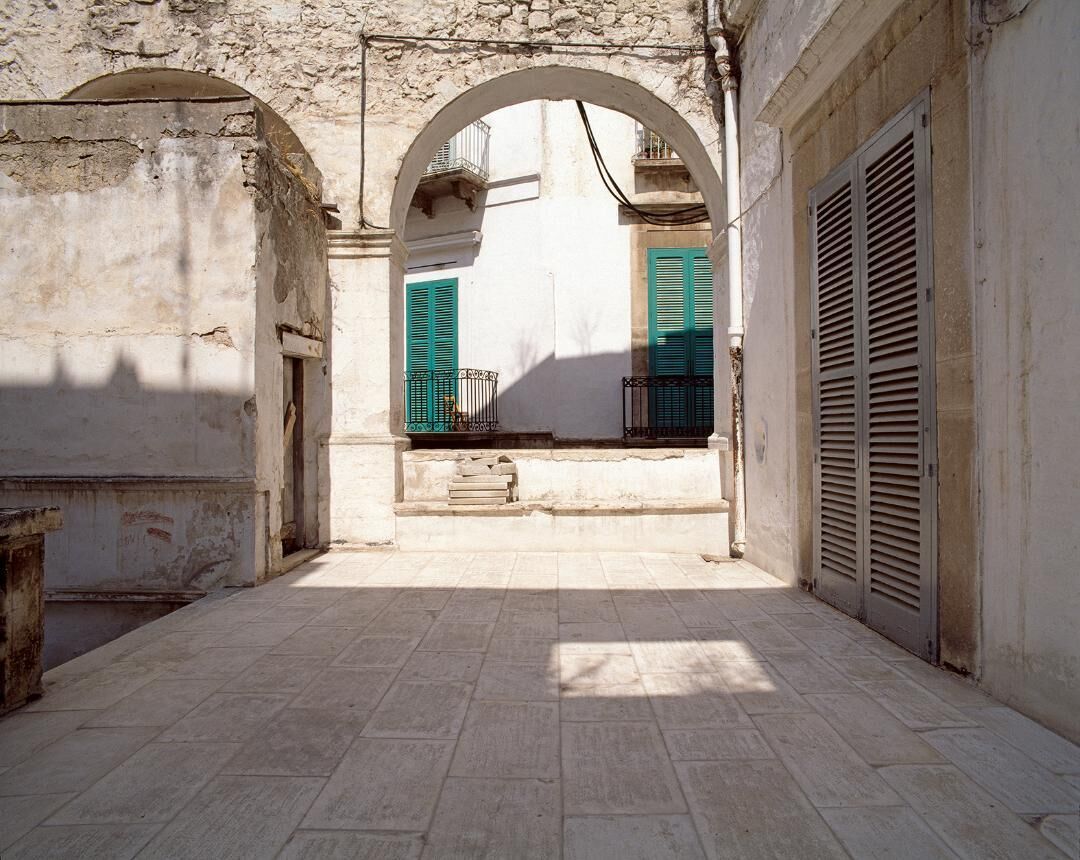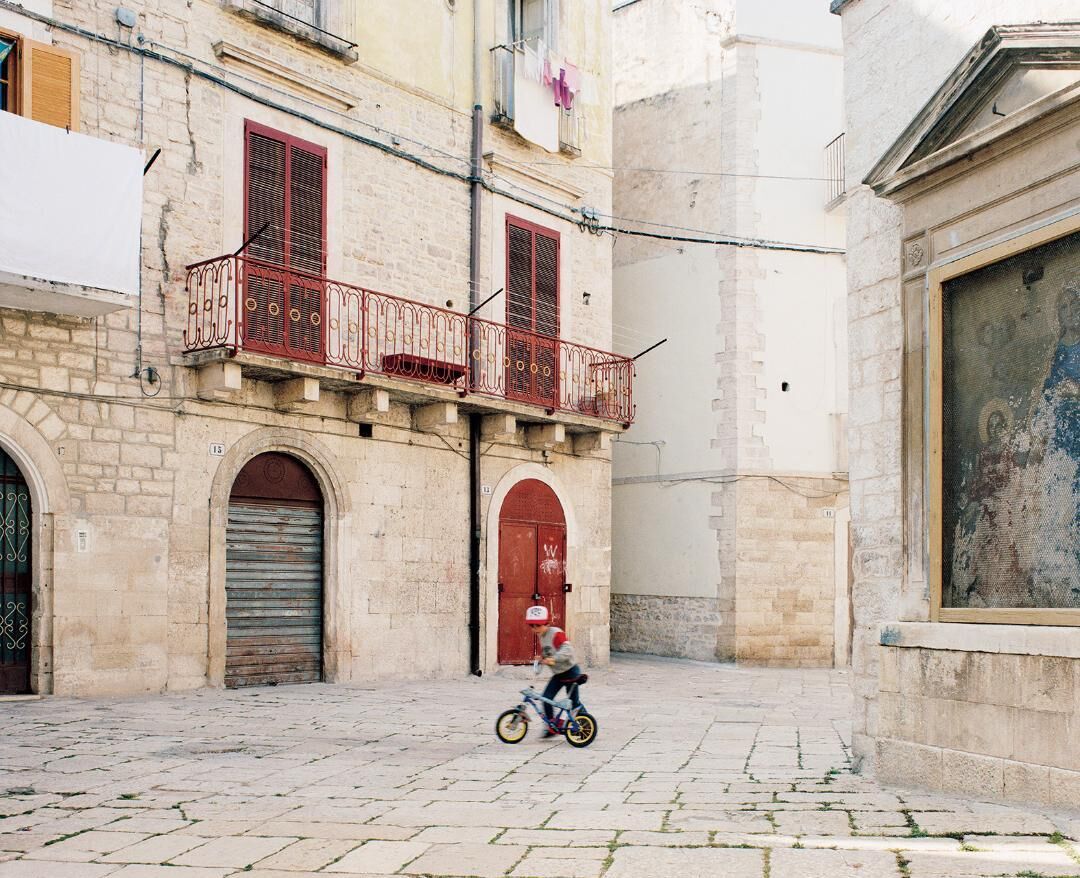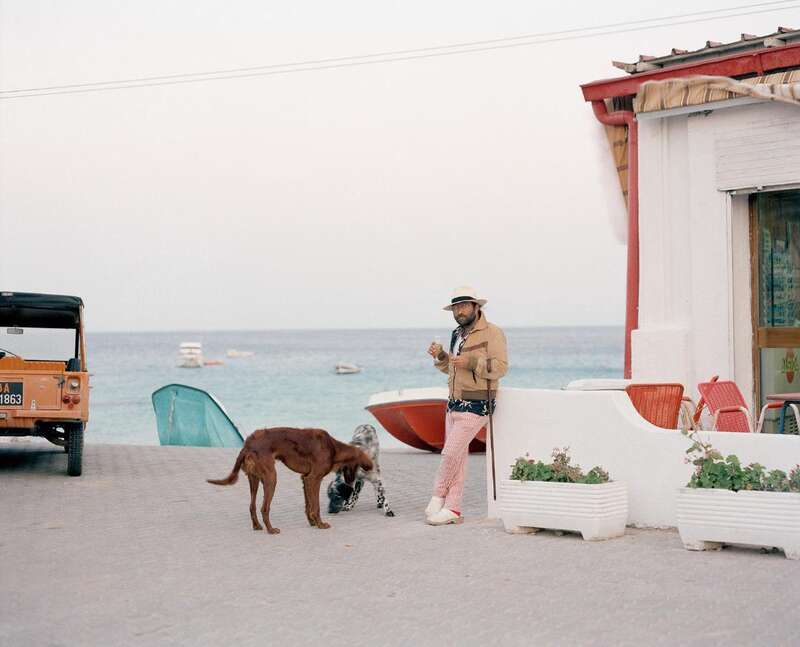Is there such a thing as an eloquent photographer, someone who has the capacity to make well-articulated photographs? This is what Luigi Ghirri’s Puglia. Tra albe e tramonti made me wonder. It started with the tipped-in image on the cover. It seemed so elegant and precise in its description of that small corner of Puglia in the frame. It felt so articulate. It gave me unexpected joy, as nowadays it seems so overlooked, distrusted, and as such, dismissed – photography’s potential to describe a place or scene with great lucidity.

Luigi Ghirri, ‘Bitonto, 1990’, from Puglia. Tra albe e tramonti (MACK, 2022). Courtesy the estate of the artist and MACK.
All the photographs in the book have that quality. They are pure and unpretentious, and yet they don’t reveal everything all at once. Instead, they invite you to look slowly and attentively, to try to get a genuine sense of what it was like for the photographer to be there, then. It feels as if one should be reading the photographs, and as a whole, Ghirri’s book is like reading a literary travelogue full of soft-spoken but accurate descriptions of specific spots and parts of Puglia in the 1980s.
It connects to what Hervé Guibert wrote in his essay Photographic Writing about Italian Journey, Goethe’s reports of his travels in Italy between 1786 and 1788. Guibert felt that in his diaries, Goethe was creating travel and architecture photographs, as his writing had ‘the same texture, the same photographic immediacy. The memory trace is the most recent, and it is barely memory – something still vibrating on the surface of the retina, an impression, almost a snapshot.’ While I don’t consider Ghirri’s photographs snapshots, they do convey this awareness, expressed here so aptly by Guibert.

Luigi Ghirri, ‘Bitonto, 1990’, from Puglia. Tra albe e tramonti (MACK, 2022). Courtesy the estate of the artist and MACK.
Guibert remarks on the difference between the description of a landscape in Goethe’s journals and in his novels. The first he calls ‘a kind of quick, staccato sketch – a postcard.’ The latter, which ‘has the advantage of a longer exposure’, he finds ‘apocryphal, the memory of many landscapes.’ Ghirri’s photographs from Puglia, in the way they visually describe, seem to combine the two. They feel crisp and clear, yet they manage to evoke nostalgic feelings.
Note to the reader. This article is part of Trigger’s 2023 ‘Summer Read’ series. We invited writers, researchers, photographers and curators to share what is currently occupying their mind through one publication they have been (re)reading during summer. What matters to them is now being recast as a challenge for today. Highly personal entries to a diversity of publications (photobooks, studies, monography, essay, historical research) lead us – readers of these readers – to reorient our gaze on (the history of) images and photography.
